Introduction: Can You Really Make ₹15 Lakhs by 2030?
It’s 2030, and you’re sitting on a beach, sipping a cool drink, with ₹15 lakhs tucked away in your bank account. Sounds like a far-off dream, doesn’t it? But what if I told you it’s not just possible—it’s within your reach?
Meet Rahul, a 25-year-old software engineer who started small. Back in 2020, he invested just ₹5,000 a month in Systematic Investment Plans (SIPs). Fast forward a decade, and he’s crossed the ₹15-lakh mark. How? By picking the right investment plans and sticking to them like glue.
I’ve been there too—nervous about where to put my money, unsure if I’d ever hit my financial goals. But over time, I learned that smart investing isn’t just for the wealthy; it’s for anyone willing to start. And that’s why you’re here. You want to know the 10 best investment plans to make ₹15 lakhs by 2030—and I’m going to walk you through them, step by step.
Main Body: The 10 Best Investment Plans to Reach Your Goal
Here’s the deal: To make ₹15 lakhs by 2030, you need a mix of growth, safety, and discipline. I’ve handpicked these 10 investment plans based on their potential returns, accessibility, and ability to fit different risk appetites. Let’s break them down.
1. Systematic Investment Plans (SIPs) in Equity Mutual Funds
What Are SIPs?
SIPs let you invest a fixed amount—like ₹5,000 or ₹10,000—into mutual funds every month. It’s like setting up a recurring deposit, but with the power of the stock market behind it.
How Do SIPs Work?
You pick a mutual fund, set your monthly investment, and watch it grow. Your money buys units based on the fund’s Net Asset Value (NAV). Over time, thanks to compounding and market growth, your wealth snowballs.
Why SIPs Rock
- Rupee Cost Averaging: Buy more units when prices dip, fewer when they soar—balancing your costs.
- Discipline: Automates your savings habit.
- High Returns: Historically, equity funds deliver 12-15% annually.
How Much to Invest for ₹15 Lakhs?
Starting in 2025 (5 years to 2030), here’s what you’d need:
| Expected Annual Return | Monthly Investment | Total by 2030 |
|---|---|---|
| 10% | ₹20,000 | ₹15.9 Lakhs |
| 12% | ₹18,400 | ₹15.2 Lakhs |
| 15% | ₹16,500 | ₹15.6 Lakhs |
Note: Returns aren’t guaranteed—markets can be unpredictable. But with patience, SIPs are a powerhouse for wealth creation.
2. Public Provident Fund (PPF)

What’s PPF?
PPF is a government-backed savings scheme—safe as a vault and perfect for conservative investors.
How Does It Work?
You invest up to ₹1.5 lakhs annually, lock it in for 15 years (though partial withdrawals are allowed after 7), and earn tax-free interest. The current rate? 7.1% p.a. (as of 2023).
Why Choose PPF?
- Safety First: Backed by the government.
- Tax Benefits: Investments qualify for deduction under Section 80C, and interest is tax-free.
- Steady Growth: Compounding works its magic over time.
Can It Hit ₹15 Lakhs?
If you max out ₹1.5 lakhs yearly from 2025 to 2030 (5 years), you’d get around ₹8.6 lakhs by 2030 at 7.1%. Not enough alone, but pair it with other plans, and you’re golden.
3. National Pension System (NPS)
What’s NPS?
NPS is a retirement-focused plan mixing equity, debt, and government securities. You control the mix based on your risk tolerance.
How Does It Work?
You invest regularly until age 60, then withdraw a portion (40% must buy an annuity). It’s flexible and market-linked.
Benefits of NPS
- Tax Savings: Up to ₹2 lakhs in deductions (₹1.5L under 80C + ₹50K under 80CCD).
- Growth Potential: Returns average 8-10% annually.
- Long-Term Focus: Ideal for disciplined savers.
Reaching ₹15 Lakhs
Invest ₹10,000 monthly at 9% returns from 2025, and you’d hit ₹7.5 lakhs by 2030. Combine it with SIPs for the full goal.
4. Equity-Linked Savings Scheme (ELSS)
What’s ELSS?
ELSS is a tax-saving mutual fund with a 3-year lock-in, heavily invested in equities.
How Does It Work?
Like SIPs, you invest regularly, but with a tax perk under Section 80C (up to ₹1.5 lakhs).
Why ELSS?
- Tax Advantage: Reduces your taxable income.
- High Returns: Often 12-14% annually.
- Short Lock-In: Only 3 years—quicker access than PPF.
Path to ₹15 Lakhs
₹18,400 monthly at 12% from 2025 gets you there. It’s a faster, tax-smart SIP alternative.
5. Fixed Deposits (FDs)
What Are FDs?
FDs are bank deposits with fixed interest—think of them as a “set it and forget it” option.
How Do They Work?
You lock in a lump sum or invest monthly, earning rates like 6-7% p.a. (2023 rates).
Why FDs?
- Low Risk: Guaranteed returns.
- Predictable: No market jitters.
- Flexibility: Tenures from months to years.
Can You Reach ₹15 Lakhs?
Invest ₹2 lakhs yearly at 7% for 5 years, and you’d get ₹11.5 lakhs. Safe, but you’d need more aggressive plans too.
6. Real Estate Investment Trusts (REITs)
What Are REITs?
REITs let you invest in real estate without buying property—think stocks, but for malls and offices.
How Do They Work?
You buy units in a trust that owns income-generating properties. Expect 8-10% returns via rent and appreciation.
Why REITs?
- Passive Income: Regular dividends.
- Diversification: Adds real estate to your portfolio.
- Liquidity: Easier to sell than physical property.
Hitting ₹15 Lakhs
₹20,000 monthly at 9% could grow to ₹14.5 lakhs by 2030. A solid mid-risk option.
7. Gold Exchange-Traded Funds (ETFs)
What Are Gold ETFs?
Gold ETFs track gold prices without you storing bars at home.
How Do They Work?
You buy units on the stock exchange, mirroring gold’s value. Returns hover around 7-10% annually.
Why Gold ETFs?
- Inflation Hedge: Gold holds value when prices rise.
- Ease: No locker fees or theft worries.
- Stability: Balances riskier investments.
Reaching the Goal
₹22,000 monthly at 8% gets you ₹15.2 lakhs. Perfect for diversification.

8. Corporate Bonds
What Are Corporate Bonds?
These are loans you give to companies, earning higher interest than FDs—around 7-9% p.a.
How Do They Work?
You invest in bonds issued by stable firms, getting interest and your principal back at maturity.
Why Bonds?
- Higher Returns: Beats FDs slightly.
- Moderate Risk: Safer than stocks, riskier than FDs.
- Income: Regular interest payments.
Path to ₹15 Lakhs
₹21,000 monthly at 8% yields ₹15.1 lakhs by 2030. Pick AAA-rated bonds for safety.
9. Index Funds
What Are Index Funds?
These mutual funds track indices like the Nifty 50—low-cost, market-linked growth.
How Do They Work?
Your money mirrors the index’s performance, averaging 10-12% returns.
Why Index Funds?
- Low Fees: Cheaper than active funds.
- Simplicity: No fund manager guesswork.
- Growth: Ties to India’s booming economy.
Hitting ₹15 Lakhs
₹19,000 monthly at 11% gets you there. A hands-off winner.
10. Dividend-Paying Stocks
What Are Dividend Stocks?
These are shares in companies that pay regular dividends—think blue-chip giants.
How Do They Work?
You earn dividends (e.g., 3-5%) plus stock price growth (8-12% total returns).
Why Dividend Stocks?
- Dual Income: Dividends + appreciation.
- Stability: Big firms weather storms better.
- Reinvestment: Compound your gains.
Reaching ₹15 Lakhs
₹18,000 monthly at 10% total return does it. Research solid companies like Reliance or TCS.
Comparison Table: Which Plan Suits You?
| Investment Plan | Expected Returns | Risk Level | Tax Benefits | Best For |
|---|---|---|---|---|
| SIPs (Equity Funds) | 12-15% | High | ELSS offers 80C | Growth Seekers |
| PPF | 7.1% | Low | Tax-free | Safety Lovers |
| NPS | 8-10% | Medium | ₹2L deduction | Retirement Planners |
| ELSS | 12-14% | High | 80C deduction | Tax Savers |
| FDs | 6-7% | Low | None | Risk-Averse |
| REITs | 8-10% | Medium | Taxable dividends | Real Estate Fans |
| Gold ETFs | 7-10% | Low-Medium | None | Inflation Hedgers |
| Corporate Bonds | 7-9% | Medium | Taxable interest | Steady Income Seekers |
| Index Funds | 10-12% | High | None | Passive Investors |
| Dividend Stocks | 8-12% | High | Taxable dividends | Income + Growth |
Case Study: Priya’s Journey to ₹15 Lakhs
Meet Priya, a 30-year-old teacher earning ₹50,000 monthly. She wants ₹15 lakhs by 2030 for her child’s education. After chatting with a financial advisor, she splits her investments:
- ₹10,000/month in SIPs: 12% return = ₹8.3 lakhs
- ₹5,000/month in PPF: 7.1% return = ₹3.6 lakhs
- ₹2,000/month in NPS: 9% return = ₹1.5 lakhs
Total by 2030: ₹13.4 lakhs. She boosts her SIP by ₹2,000 monthly midway, hitting ₹15 lakhs. Priya’s secret? Starting early and diversifying.
Expert Quotes to Inspire You
- Warren Buffett: “The best time to plant a tree was 20 years ago. The second best time is now.” Start investing today—time is your ally!
- Suze Orman: “The key to making money is to stay invested.” Consistency beats timing the market.
- Rakesh Jhunjhunwala: “The mother of all wealth creation is discipline.” Stick to your plan, and watch it grow.
FAQs: Your Burning Questions Answered
Q: How much do I need to invest monthly to reach ₹15 lakhs by 2030?
A: It varies—₹18,400 at 12% (SIPs) or ₹21,000 at 8% (bonds). Use online calculators for your exact plan.
Q: Which investment is the safest?
A: PPF and FDs top the list—low risk, guaranteed returns.
Q: Can I mix multiple plans?
A: Absolutely! Diversifying balances risk and growth—like Priya did.
Q: Are there tax benefits?
A: Yes—PPF, NPS, and ELSS offer deductions. Check current rules.
Q: How do I pick the right plan?
A: Match it to your risk tolerance and goals. Nervous? Go for FDs. Bold? Try SIPs.
Q: What if the market crashes?
A: Equity plans dip short-term, but historically recover. Stay invested.
Conclusion: Your ₹15 Lakhs Awaits—Start Now!
Here’s the truth: ₹15 lakhs by 2030 isn’t a fantasy—it’s a plan. Whether you lean toward the high-growth thrill of SIPs or the steady calm of PPF, the power lies in starting today. Every rupee you invest now is a brick in your financial fortress.
I’ve seen it myself—small steps, like my first ₹1,000 SIP, turned into big wins over time. You don’t need to be rich to build wealth; you need discipline and the right strategy. Pick a plan (or three!), set your budget, and take that first step.
Your Call to Action: Don’t wait for “someday.” Open an SIP account, visit your bank for a PPF form, or consult a financial advisor today. By 2030, you could be the one sipping that beachside drink, smiling at the ₹15 lakhs you built. What are you waiting for?





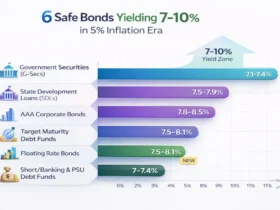





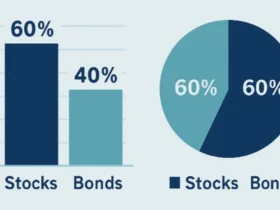
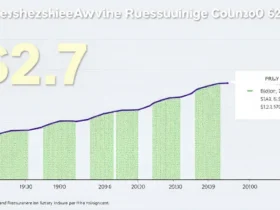





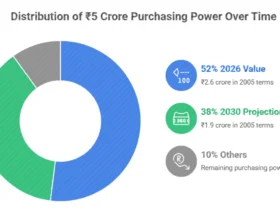


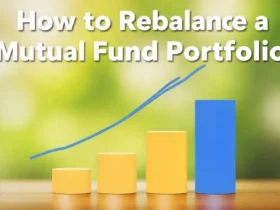

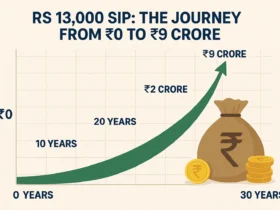



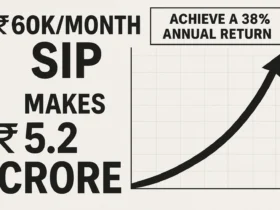
1 Comment